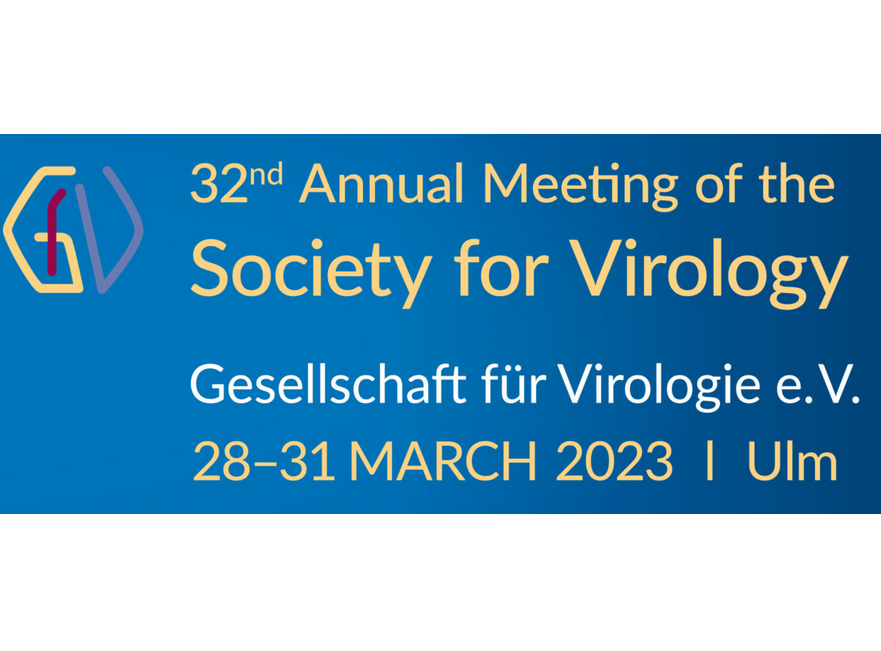Young scientists associated with CRC 1279 honored for outstanding doctoral theses during the annual meeting of the Society for Virology
At this year’s annual meeting of the German Society for Virology, in addition to the highly engaging plenary sessions and workshops, two members of CRC 1279 received awards for their excellent PhD studies.
Rüdiger Gross examined the impact of extracellular vesicles (EVs) on viral infections. Several viral pathogens use a process called apoptotic mimicry for infection. Specifically, they present a lipid called phosphatidylserine (PS) at their surface. PS is typically expressed by dying cells and an “eat me” signal for immune cells. Viruses expose PS to hijack the same receptor as dying cells for efficient entry into their host cells. Dr. Gross demonstrated that PS-containing EVs are highly abundant in body fluids, such as semen or saliva, and inhibit infection of viral pathogens by outcompeting them for binding of the cellular PS receptor. His results help to explain why some pathogens, e.g. Zika virus, are rarely transmitted via the sexual route and were honored with the doctoral award of the Bernhard-and-Ingrid-Fleckenstein Foundation.
Rayhane Nchioua aimed to characterize interferon-inducible innate immune factors that inhibit SARS-CoV-2 replication. She showed that the zinc finger antiviral protein (ZAPs) significantly restricts SARS-CoV-2 in human lung cells. This came as surprise since SARS-CoV-2 shows one of the lowest genomic contents of CpG dinucleotides, which are specifically targeted by ZAP, of all known coronaviruses. However, her most striking result was that SARS-CoV-2 is capable of hijacking the interferon-inducible transmembrane protein 2 (IFITM2), which is known for its broad antiviral activity, as cofactor for efficient entry and replication. Her achievements were recognized with the “DZIF” doctoral award of the Society for Virology.
The members of CRC 1279 congratulate both awardees to their outstanding contributions and wish them continued success.


